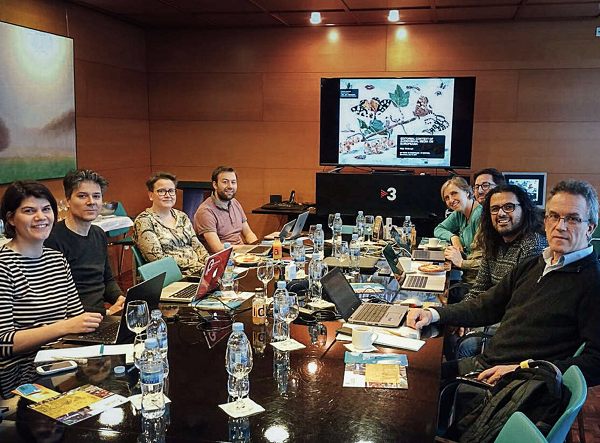Making audiovisual media a first-class citizen in Europeana

As audiovisual media have become a major source of both entertainment and information throughout our 20th and 21st centuries, the Audiovisual Media Task Force present their final report and recommendations.
An upgrade for Sounds and Sights
Dedicated expert hubs, as well as singular audiovisual archives, national aggregators and topical expert hubs have contributed sounds and moving images to Europeana over the past decade. Their popularity remains uncontested. Reports consistently quote a great public interest in audiovisual items from Europeana visitors.
In February 2016, a group consisting of members from EUscreen, the European Film Gateway, and Europeana Sounds proposed a Task Force that would outline a set of recommendations to make audiovisual media a first-class citizen, both on the Europeana portal and within the wider Europeana ecosystem.

Round table group shot, Montse Català
Some of the advancements needed are technical in nature. They relate to the time-based and complex composition of the medium. The ‘Audiovisual Media in Europeana’ Task Force sees these as utterly solvable. We live in a world that is technologically advanced enough to have video as a daily part of our learning, sharing, and communicating environments. Europeana can rely upon existing standards and partners’ best practices to improve the experience of these items for its various user groups.
Outlining recommendations
The Task Force aimed to formulate recommendations regarding ’audiovisual content in Europeana’ in three specific areas:
1. Editorial: How to embed audiovisual content in Europeana Collections and other Europeana-related sites reusing AV materials assessment of multimedia content (topics), and editorial use of AV content externally (length, edit on i.e. social media platforms).
2. Improving the use: Improving search on time-based media (including an assessment of audiovisual media standards in relation to EDM), Multimedia hyperlinking (incl. definition of a pilot / exhibition), Crowdsourcing
3. Accessibility: Support of subtitles and multilinguality emerging media formats (playout on mobile devices)
This relates to work being done by neighbouring groups, such as the Data Quality Committee, Europeana Tech and the Preparing Europeana for IIIF involvement Task Force. A heartfelt thank you goes out to the reviewers of the document for strengthening its quality, and the Europeana Board for thinking with us about further steps for implementation.
Please find attached the Final report and recommendations of the Audiovisual Media in Europeana Task Force from June 2017.
